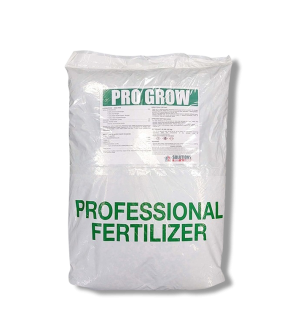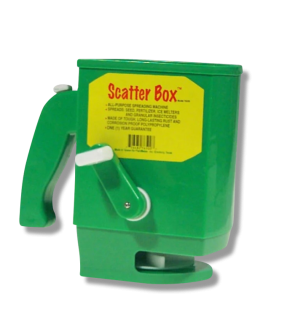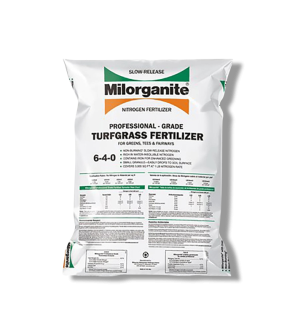Summer Fertilizer Tips
Most Effective Products
Summer Fertilizer Tips: How to Fertilize Your Lawn During the Summer
This page is general article on the proper steps and timing of a summer fertilizer for warm-seasoned turf. By using the products and methods suggested throughout this DIY guide you can help minimize heat stress and promote a thicker lawn during the summer. Follow this guide and use the recommended products for a more greener, and lush summer lawn.
Maintaining healthy green lawns is important for a home's curb appeal, especially during the warmer summer months when everyone wants to enjoy their lawns. With that being said, summer is just as important when it comes to proper fertilization as the other seasons.
A-lot of homeowners do not realize that summer is equally as stressful as the winter season due to the combination of intense heat, periods of drought, summer lawn pests, new weed threats, summer lawn diseases, and even more wear and tear from outdoor activities that can start to take a toll on the healthiest of turf.
To ensure that your lawn thrives all summer you will to need to learn about summer fertilization. However, fertilizing your grass is not as simple as sprinkling the granules across the lawn. By following this DIY guide you can be armed with the proper knowledge about summer fertilization, which can help to combat bare patches, thin turf, and other issues that may arise in the summer.
Should I Fertilize My Lawn in the Summer

Summer is a difficult time for lawns as extreme heat and drying winds will easily stress turf. Fertilizer applications in the summer are different than other seasonal fertilizers because it does not focus on root growth, but rather helping the lawn maintain its health. With the extra boost of nutrients from the summer fertilizer it will help your lawn retain water, promote green growth without excessive growth, and limit conditions for weed growth and pest activity.
This type of fertilization is also going to strengthen your warm-seasoned turf so it can handle up-coming weather changes that comes with summer and better withstand fall weather.
What Fertilizer Should I Use in the Summer

Before considering which fertilizer is the best for your lawn in the summer you will need to know its turf type. Depending on where you live in the United States, your lawn can consist of either warm-seasoned turf, cool-seasoned turf, or a mix of both.
If you live in the southern portion of the United States, then your turf should consist of warm-seasoned turf such as St. Augustinegrass, Bahiagrass, Bermudagrass, Centipedegrass, Zoysiagrass, Buffalograss, and Carpetgrass. These grass species actively grow well in hot, humid temperatures of up to 90 degrees Fahrenheit.
If you live in the northern portion of the United States then your turf likely consists of cool-seasoned turf like Kentucky Bluegrass, fescue, bentgrass, or perennial ryegrass. These grass species actively grow in relatively cooler temperatures between 65 and 75 degrees Fahrenheit. Cool-seasoned turf cannot be fertilized in the summer since this would cause it to grow out of season leading to death or severe turf injury from the hot summer weather. However, it may be fertilized in the late summer if the weather is cool enough.
Determine which summer fertilizer is best for your lawn by conducting a soil test to see what nutrients are missing or present in your turf. Lawns typically need a summer fertilizer that has a slow-release formulation to minimize the risk of fertilizer burn while also staying in the soil longer. Granular fertilizers are most appropriate as they help to slowly release nitrogen, phosphorous, and potassium over the summer without adding further stress to lawn.
When to Fertilize the Lawn in Summer

Warm-seasoned grass should typically be fertilized once in the early spring and once more in the early summer. Cool-seasoned turf can be fertilized in the early fall when the weather starts to cool.
A good rule of thumb is to use soil temperature to determine when to apply fertilizer. Every grass species is different, but for warm-season grasses, you will generally make your first fertilizer application when the soil temperature has warmed to 65 degrees Fahrenheit, and then you can make another application when the soil temperature reaches 80 degrees Fahrenheit. Allow 6 to 8 weeks to pass after spring feeding before applying a summer fertilizer.
For cool-season grasses, you will actually want to avoid fertilizer applications during the summer. Fertilizing cool-season turf in summer could lead to overstimulation and you may end up burning your lawn. Instead, the best times to fertilize a cool-season lawn are in the early spring or early fall.
Be careful about fertilizing later on in the summer since turf could be under stress from drought and heat, especially in July and August. Fertilizer applications during periods of extreme heat and dryness from drought could cause fertilizer burns on lawns.
How to Fertilize Your Lawn in Summer
Before handling any type of pesticide material, you will need to wear the proper personal protective equipment (PPE). Check the conditions of your turf to determine if it is dormant or under heat or drought stress. Withhold summer lawn fertilizer applications until moisture returns, pest or weeds are eliminated, and until the lawn is actively growing.
If unsure that the lawn is dead or dormant, then perform a simple tug test. Gently, take a small handful of brown foliage and pull. Any brown foliage that pulls effortlessly from the soil is dead, but if there is some resistance then the turf is dormant.
Step 1: Measure Lawn
Determine how much summer fertilizer to apply by measuring the square footage of the treatment area. To do this, measure the length and width of the treatment area in feet then multiply them together (length X width = square footage). For acreage, take the square footage and divide it by one acre (square footage / 43,560 sq. ft. = acre).
Step 2: Apply Summer Fertilizer

We recommend using a fertilizer with a 50% slow release nitrogen formulation such as Solutions Pro Grow Summer Blend 19-4-10 Fertilizer. The Solutions Pro Grow Summer Blend 19-4-10 Fertilizer is long-lasting fertilizer formulated with the essential nutrients to keep lawns strong and healthy during the summer.
Mow your lawn until it is 3 inches at least 1 to 2 days prior to Solutions Pro Grow Summer Blend 19-4-10 Fertilizer application. You will also need to water your lawn 1 day prior to this products application to help fertilizer move more easily through turf.
Apply 5 lbs. of Solutions Pro Grow Summer Blend 19-4-10 Fertilizer per 1,000 sq. ft. of treatment area. When you have determine how much product to use you will then load the proper amount into the push spreader. Make sure your turf is dry before applying Solutions Pro Grow Summer Blend 19-4-10 Fertilizer.
Evenly distribute half the amount of Solutions Pro Grow Summer Blend 19-4-10 Fertilizer once across the treatment area, then broadcast the other half at a perpendicular angle to cover the area in the middle.
Once application is complete, you will then water the Solutions Pro Grow Summer Blend 19-4-10 Fertilizer granules in with a light amount of irrigation.
Key Takeaways
Is it Okay to Fertilize in Hot Weather
- Avoid applying summer fertilizers when lawn is dormant or under heat and drought stress. Temperatures consistently above 85 degrees Fahrenheit could risk fertilizer burn.
Can I Fertilize Cool-Seasoned Turf in Summer
- Cool-seasoned turf can be fertilized in the late summer or early fall when temperatures are beginning to cool and hot weather is constantly decreasing.
What Nutrients Does Grass Need in the Summer
- Fertilizers that are applied in the summer should contain low levels of nitrogen, phosphorus, and potassium.
-
-
-
-
Milorganite Pro 6-4-0$50.49 - $50.49














































































































































































































































































































































































































































































































































